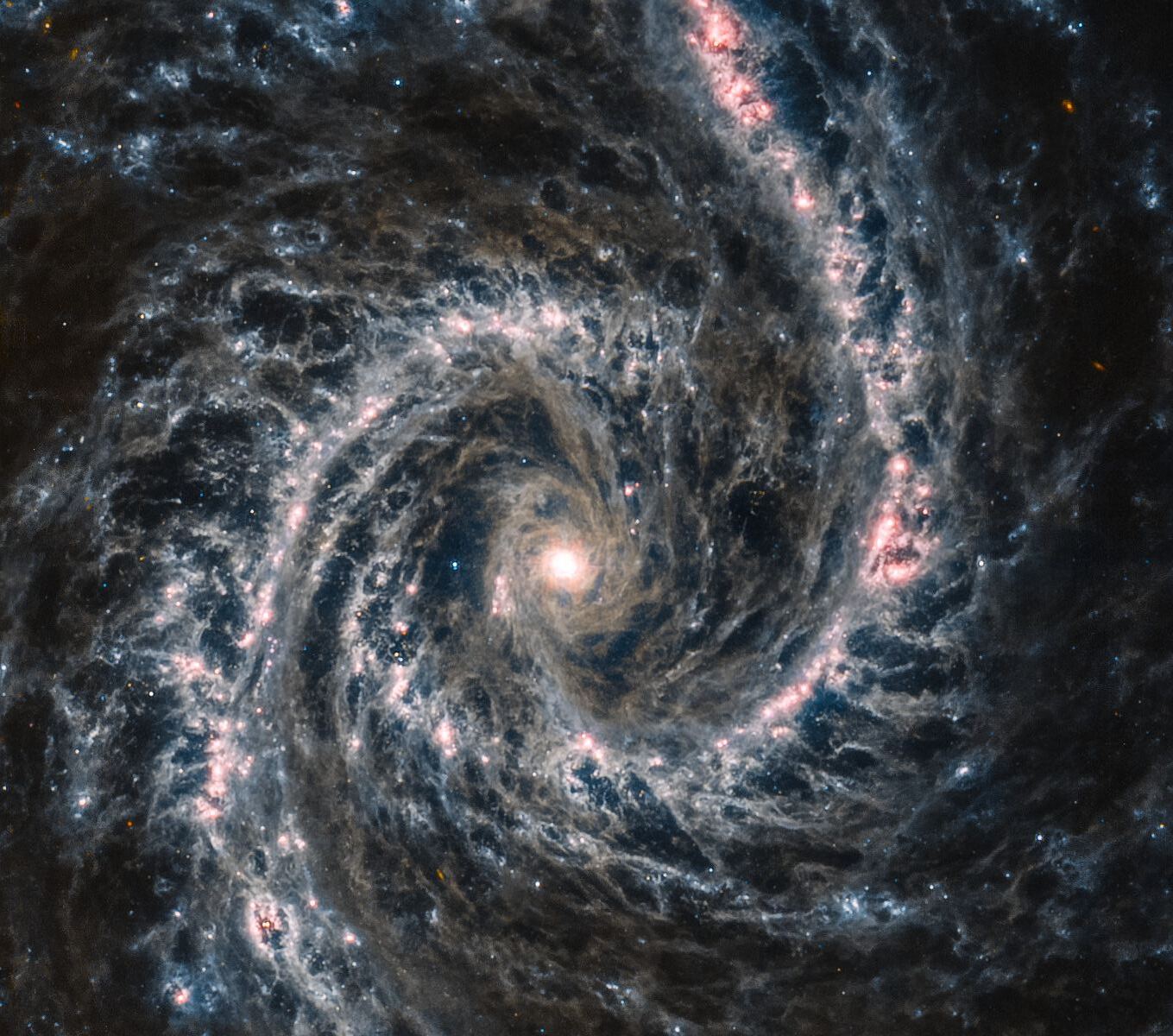Here’s an absolutely stunning new view from the James Webb Space Telescope of a dusty spiral galaxy, NGC 1566. Amateur (but expert!) image editor Judy Schmidt took the raw data from JWST’s Mid-Infrared Instrument (MIRI) and teased out this eerie, spider-web-like view of this distant galaxy. The swirling and symmetrical arms are so full of dust that not many stars are visible.
The reddish areas correspond with star formation, however, Schmidt explained, which shows how the physics of star formation is intertwined with the amount of dust and gas in a galaxy. Additionally, the small central nucleus of NGC 1566 is extremely bright, which is a telltale sign of it being among the Seyfert class of galaxies. The centers of these galaxies are very active and luminous, emitting strong bursts of radiation and potentially harboring supermassive black holes that could be many millions of times the mass of the Sun.
NGC 1566 is located approximately 40 million light-years away in the constellation of Dorado. This is an intermediate spiral galaxy, which means its shape is somewhere between a barred spiral galaxy (like our Milky Way) and a regular spiral galaxy.
Schmidt said on Twitter that the muted colors in this image come from the various emission of dust.
“I had to increase the saturation tremendously to make it colorful at all. The separation is not very much otherwise,” she said, adding that this all “took a bit of doing this time because the pipeline images available from the archive had a lot of alignment issues. I had to manually mosaic this.”
The image comes from JWST’s Early Release Program, where immediate access is available to data from specific science observations from JWST, completed within the first five months of the telescope’s science operations.
Compare JWST’s mid-infrared view with an earlier Hubble image taken by Hubble’s Wide Field Camera 3 (WFC3) in the near-infrared part of the spectrum.


